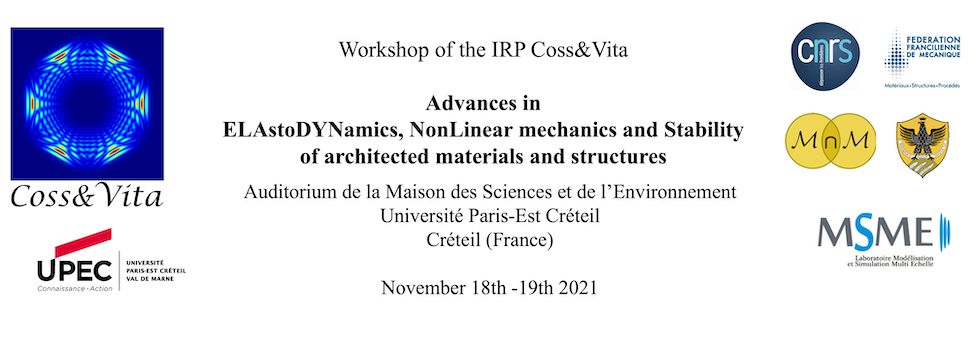Inherent substructure causes a material to deviate from conventional elasticity response. Such mechanical metamaterials are modeled by generalized mechanics, one possible version is the strain gradient theory. Especially in damage mechanics, such a generalization is difficult to acquire. We exploit the action formalism for a formulation in generalized damage mechanics for metamaterials [1]. The key point is using so-called auxilliary variables in order to involve the first rate of damage variable into the action formalism. In this way, the presented action formalism with auxilliary variables generates the weak form necessary for the numerical implementation. A finite element method based approach is used by means of open-source packages FEniCS (see [2] for engineering examples). Probably for the first time, three-dimensional simulations in metamaterials damage mechanics are demonstrated for simple geometries.
[1] Abali, B.E., Klunker, A., Barchiesi, E., Placidi, L.. A novel phase-field approach to brittle damage mechanics of gradient metamaterials combining action formalism and history variable. Z Angew Math Mech. 2021;101:e202000289. https://doi.org/10.1002/zamm.202000289
[2] Abali, B.E. Computational Reality. Solving Nonlinear and Coupled Problems in Continuum Mechanics. Vol. 55. Advanced Structured Materials. Springer Nature, Singapore, 2017. isbn: 978-981-10-2443-6.

 PDF version
PDF version
